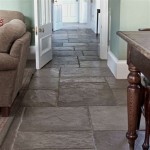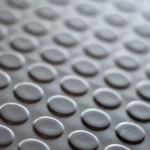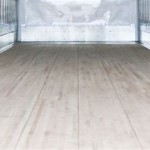Best Hardwood Flooring For Dogs
Selecting flooring for a home with dogs requires careful consideration. While hardwood flooring offers aesthetic appeal and durability, some types are better suited for canine companions than others. Factors such as scratch resistance, water resistance, ease of cleaning, and overall comfort for the dog should be prioritized when making a decision. This article aims to explore various hardwood flooring options, highlighting their strengths and weaknesses relative to dog ownership.
Understanding the Challenges of Dogs and Hardwood Flooring
Dogs can present several challenges to hardwood flooring. Their nails can scratch the surface, leading to visible wear and tear over time. Accidents related to house training or general pet messes can cause water damage or staining if not addressed promptly. Furthermore, some hardwood floors might be too slippery for dogs, potentially leading to joint issues or injuries. The key is to select a hardwood type and finish that can withstand these challenges.
The first major concern is scratching. A dog's nails, even when trimmed regularly, can exert considerable pressure on a floor's surface. The type of wood and the hardness of the finish determine the floor's resistance to scratches. Softer woods, such as pine or fir, are more prone to scratches than harder woods like Brazilian cherry or hickory. Similarly, a durable finish can provide an additional layer of protection against nail marks and other surface damage.
Water and moisture are also significant threats. Dog bowls can spill, and accidents during house training are unavoidable. Hardwood, especially if it is not properly sealed or maintained, can absorb moisture, leading to warping, cupping, or even mold growth. While immediate cleanup is crucial, selecting a water-resistant or water-repellent hardwood option can significantly reduce the risk of long-term damage.
Finally, the texture and finish of the flooring play a role in a dog's comfort and safety. Highly polished floors can be slippery, especially for older dogs or breeds prone to hip dysplasia. A floor with some texture or a matte finish can provide better traction, reducing the risk of slips and falls. The goal is to find a balance between aesthetic appeal and practicality for the dog's well-being.
Evaluating Hardwood Types for Dog Friendliness
Several hardwood types are available, each with varying degrees of suitability for homes with dogs. These include solid hardwood, engineered hardwood, and various species of wood, each possessing unique characteristics that impact their durability and resistance to wear and tear.
Solid hardwood is a classic choice, known for its beauty and longevity. However, it is susceptible to moisture damage and can be more expensive to install and maintain. It is typically one solid piece of wood, which can expand and contract with changes in humidity. This makes it less suitable for areas prone to moisture or fluctuating temperatures, such as basements or bathrooms.
Engineered hardwood consists of multiple layers of wood veneer bonded together, with a top layer of solid hardwood. This construction makes it more dimensionally stable than solid hardwood, meaning it is less likely to warp or cup in response to moisture. It is also generally more affordable and easier to install. Engineered hardwood can be a good option for homes with dogs, especially when paired with a durable finish.
When considering specific wood species, hardness, as measured by the Janka hardness scale, is a critical factor. The Janka scale measures the force required to embed a steel ball into the wood. Higher Janka ratings indicate harder, more scratch-resistant woods. Woods like Brazilian cherry (Janka rating of 2350), hickory (Janka rating of 1820), and maple (Janka rating of 1450) are relatively hard and can withstand more wear and tear from dogs' nails than softer woods like pine (Janka rating of 380) or Douglas fir (Janka rating of 660).
However, hardness is not the only factor to consider. The grain pattern of the wood can also influence its ability to hide scratches. Woods with prominent grain patterns, such as oak or hickory, can camouflage minor scratches and imperfections better than woods with smoother, more uniform grain patterns.
Selecting the Right Finish and Maintenance Practices
The finish applied to hardwood flooring plays a crucial role in its resistance to scratches, water damage, and overall wear and tear. Proper maintenance practices are also essential for preserving the floor's appearance and longevity.
Polyurethane finishes are a popular choice for hardwood floors due to their durability and resistance to scratches and water. Oil-based polyurethane finishes tend to be more durable and water-resistant than water-based polyurethane finishes, but they also have a stronger odor and longer drying time. Water-based polyurethane finishes are lower in VOCs (volatile organic compounds) and dry faster, making them a more environmentally friendly option.
Aluminum oxide finishes are among the most durable and scratch-resistant options available. These finishes are typically applied during the manufacturing process and are extremely resistant to wear and tear. They are a good choice for high-traffic areas and homes with large dogs or multiple pets.
Penetrating oil finishes, such as tung oil or linseed oil, penetrate the wood fibers, providing protection from within. These finishes offer a natural look and feel, but they require more frequent maintenance than polyurethane or aluminum oxide finishes. They are also less resistant to scratches and water damage.
Regular cleaning is essential for maintaining hardwood floors and preventing damage from dog-related messes. Sweep or vacuum the floor regularly to remove dirt, debris, and pet hair. Use a damp mop with a pH-neutral cleaner specifically designed for hardwood floors to clean up spills and messes promptly. Avoid using harsh chemicals or abrasive cleaners, as these can damage the finish.
Placing mats or rugs in high-traffic areas, such as entrances and hallways, can help protect the floor from scratches and wear. Trim your dog's nails regularly to minimize the risk of scratches. Consider using booties or paw protectors for your dog when they are indoors, especially if they have long nails or tend to scratch the floor.
Finally, consider refinishing the hardwood floors as needed to address scratches, wear, and water damage. Refinishing involves sanding down the existing finish and applying a new coat of finish. This can restore the floor's appearance and protect it from further damage. The frequency of refinishing will depend on the type of wood, the finish, and the level of traffic in the home.
In summary, choosing the best hardwood flooring for dogs involves carefully considering the type of wood, the finish, and implementing proper maintenance practices. Prioritizing durability, water resistance, and ease of cleaning will result in a floor that is not only aesthetically pleasing but also able to withstand the challenges presented by canine companions.

The 10 Best Types Of Wood Flooring For Dogs Floorings

Best Hardwood Floors For Pets Bargains Blog Www Hardwoodbargains Com

How To Choose The Best Flooring For Dogs Home Depot

How To Choose The Best Flooring For Dogs Home Depot

Choosing The Best Hardwood Floors For Dogs And Cats Carlisle Wide Plank

How To Choose The Best Flooring For Dogs Home Depot
.png?strip=all)
What S The Best Dog Friendly Flooring

Best Flooring For Dogs Things To Keep In Mind Hardwood Bargains Blog Www Hardwoodbargains Com When Choosing New

The 10 Best Types Of Wood Flooring For Dogs Floorings

How To Choose The Best Flooring For Dogs Home Depot








